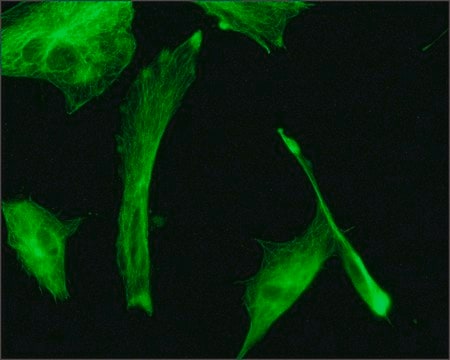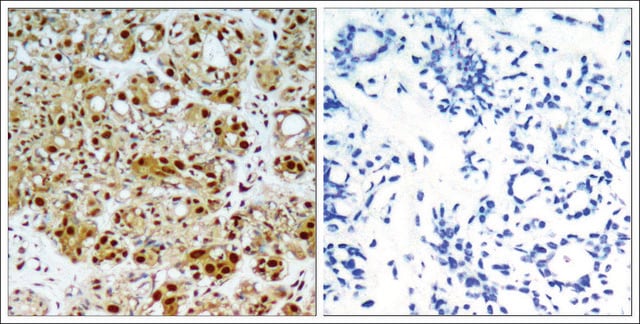T8328
Anti-β-Tubulin antibody, Mouse monoclonal
~2.0 mg/mL, clone AA2, purified from hybridoma cell culture
Sinónimos:
Beta Tubulin Antibody Sigma, Beta Tubulin Antibody Sigma - Monoclonal Anti-β-Tubulin antibody produced in mouse, Anti-TUBB, Anti-Tubulin, beta
About This Item
Productos recomendados
biological source
mouse
Quality Level
conjugate
unconjugated
antibody form
purified from hybridoma cell culture
antibody product type
primary antibodies
clone
AA2, monoclonal
form
buffered aqueous solution
mol wt
antigen ~50 kDa
species reactivity
human, mouse, rat, bovine
packaging
antibody small pack of 25 μL
concentration
~2.0 mg/mL
technique(s)
immunocytochemistry: suitable
immunohistochemistry: suitable
immunoprecipitation (IP): suitable
western blot: 1-2 μg/mL using Neuro-2a cell extract
isotype
IgG1
UniProt accession no.
shipped in
dry ice
storage temp.
−20°C
target post-translational modification
unmodified
Gene Information
human ... TUBB(203068)
General description
Specificity
Immunogen
Application
Biochem/physiol Actions
B2702 peptide binds to β-tubulin and inhibits natural killer (NK) cell cytotoxicity and it influences microtubule polymerization, which damages cytoskeleton organization and chaperone-like activity of tubulin. Mutation in the gene leads to various neuronal migration disorders such as lissencephaly, pachygyria and polymicrogyria malformations.
Physical form
Storage and Stability
For extended storage, freeze at -20 °C in working aliquots. Repeated freezing and thawing, or storage in “frost-free” freezers, is not recommended. If slight turbidity occurs upon prolonged storage, clarify the solution by centrifugation before use. Working dilution samples should be discarded if not used within 12 hours.
Disclaimer
Not finding the right product?
Try our Herramienta de selección de productos.
Optional
Storage Class
10 - Combustible liquids
flash_point_f
Not applicable
flash_point_c
Not applicable
ppe
Eyeshields, Gloves, multi-purpose combination respirator cartridge (US)
Certificados de análisis (COA)
Busque Certificados de análisis (COA) introduciendo el número de lote del producto. Los números de lote se encuentran en la etiqueta del producto después de las palabras «Lot» o «Batch»
¿Ya tiene este producto?
Encuentre la documentación para los productos que ha comprado recientemente en la Biblioteca de documentos.
Los clientes también vieron
Artículos
Frequently asked questions about neural stem cells including NSC derivation, expansion and differentiation.
Nuestro equipo de científicos tiene experiencia en todas las áreas de investigación: Ciencias de la vida, Ciencia de los materiales, Síntesis química, Cromatografía, Analítica y muchas otras.
Póngase en contacto con el Servicio técnico














